More than a third of all production injuries is the share of injuries of hands. A half of them it would be possible to avoid if workers used the qualitative, correctly picked up protective gloves. We hope that this article will help you to know which gloves are best suited for your work environment.
Providing workers with individual means of protection of hands – an obligation of employer. The difficult task of the choice of working gloves is assigned to it. Not to make the wrong choice, it is necessary to consider several important points.
Classification by types of protection
There is no universal model of the gloves suitable for all types of work. Each enterprise has the harmful factors depending on which it is necessary to choose gloves.
By the form protection all gloves are divided into several groups:
- Protection against mechanical influences. Gloves of this group differ in resistance to attrition, a gap, cuts and punctures. For their production materials are used natural (skin, a split, canvas) and synthetic (latex, nylon, PVC, polyurethane). To increase degree of protection and to broaden the sphere of use, producers combine various materials.
- Example. Universal gloves are made of cotton fabric, the working surface is strengthened by a dense split. Will reliably protect hands from cuts and punctures, a rack on a gap and attrition. Are suitable for work with a stone, metal and rough surfaces.
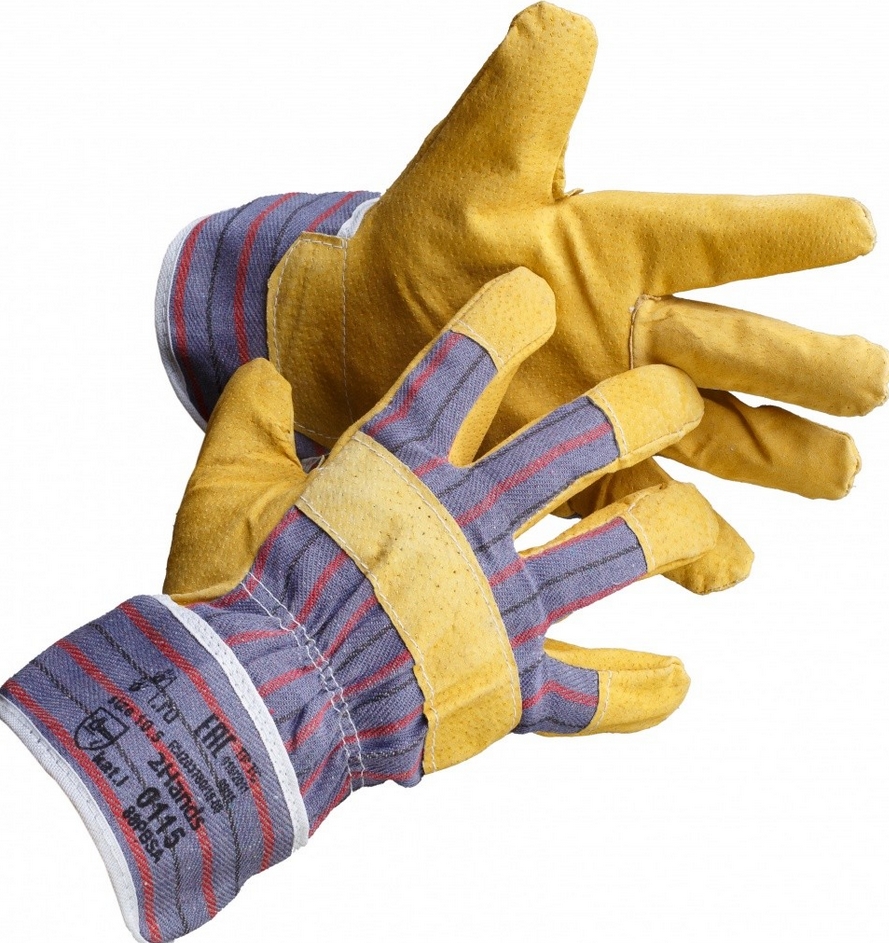
- Protection against the lowered temperatures. The warmed gloves protecting hands from a frostbite at contact with cold surfaces and also during the work in the open air in the winter enter into this group. They are made of frost-resistant materials (genuine leather, leatherette, wool, a split, etc.). As heater natural wool, natural or faux fur is applied.
- Example. Gloves the Snow leopard are made of cotton fabric in a combination with a split. As the warming pad faux fur with dense pile is used.
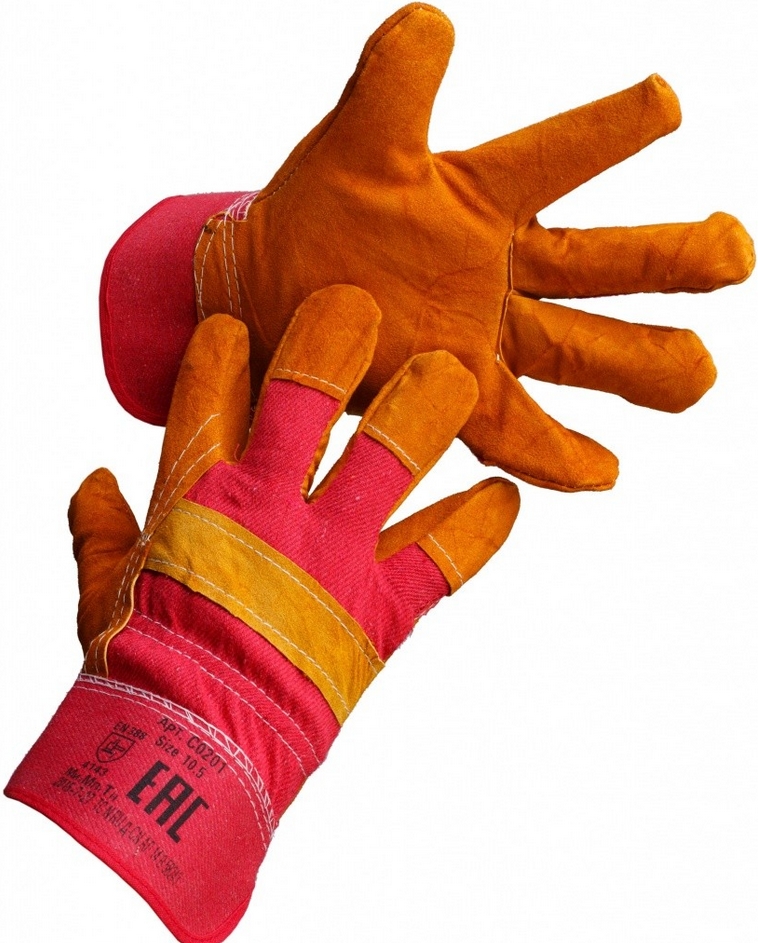
- Protection against the increased temperatures. The gloves entering into this group are presented in big assortment. Here products for protection against naked flame, against thermal radiation, against contact with a hot surface enter and also threw products with protection against splashes of heated, sparks and scales. Respectively, for production of such gloves heat-resistant materials and also materials with fire-resistant impregnation (a split, canvas, genuine leather, kevlar) are used.
- Example. Gaiters Flint from a tanning split with a pad from cotton fleece protect hands from burns from sparks, drops of the heated metal and scales. Are ideal for welding works.
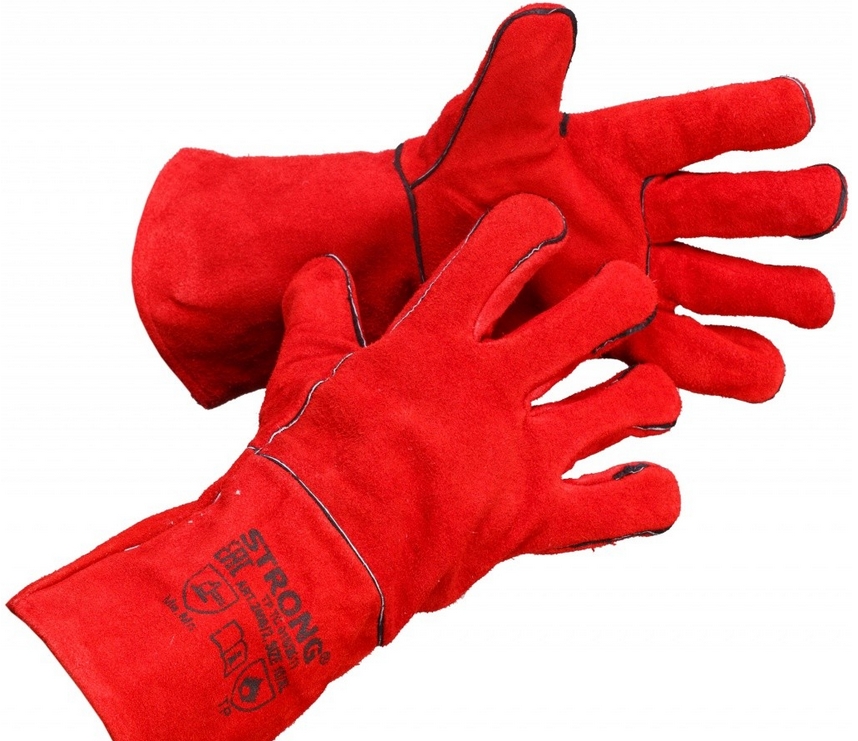
- Protection against electric shock. If working process is connected with electricity, it is necessary to choose gloves of this group. They are made of the materials which are not carrying electric power – rubbers, latex.
- Example. DE gloves are made of natural latex and are suitable for work on electro-installations up to 1000 volts.
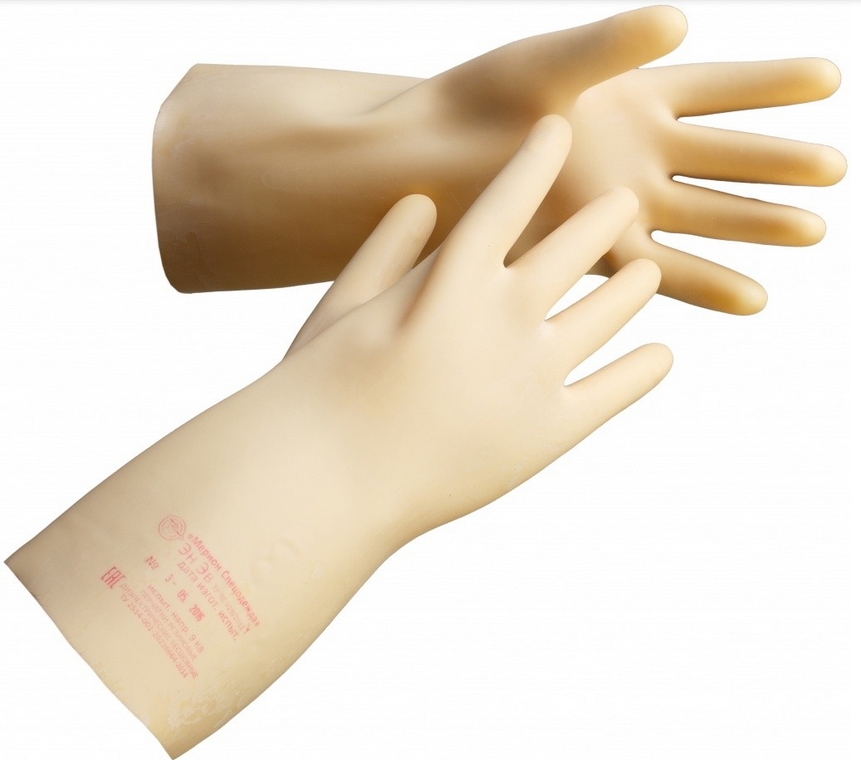
- Protection against chemicals. Gloves of this group protect hands from aggressive influence of solutions of alkalis and acids of various concentration and also organic and resistant solvents, oils, varnishes, paints. Make such gloves of latex, a nitrile rubber, a neoprene of various thickness.
- Example. KShchS gloves type 1 are made of natural latex and no more than 20% can be applied to work with acids as concentration.
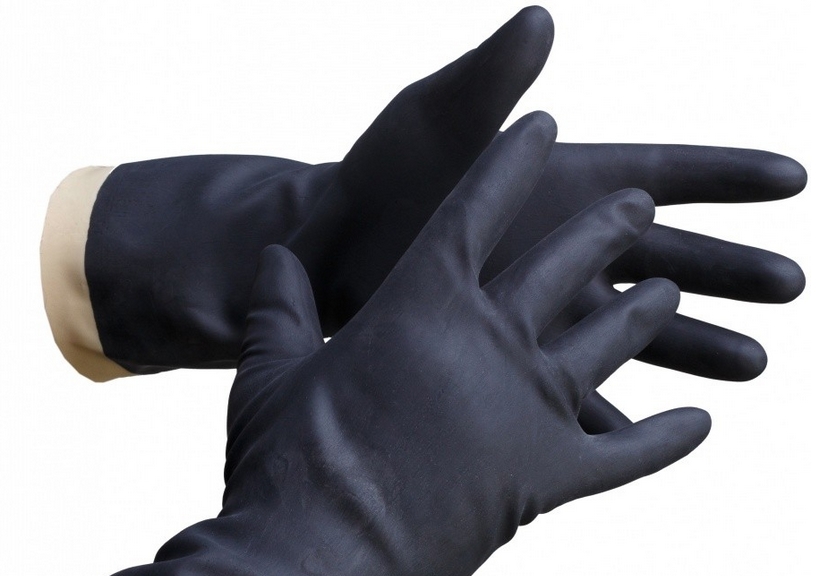
- Protection against oil and oil products. Products of this group are in demand for workers of the oil and gas industry and also are applied when it is necessary to deal with crude oil or products of its processing. For production of such gloves the materials steady against such influences or having oil – petrol-resistant impregnation are used.
These are only some groups of protective gloves. More detailed description can be found in ISO certificates each country uses. The product can have also the whole complex of protective properties that considerably broadens the sphere of its application.
Medical gloves
For providing sanitation and infectious safety of personnel and patients all employees of medical institutions use special gloves which and are called – medical. They represent disposable products from natural latex, nitrile rubber, a neoprene or blamed. For convenience of putting on powder from corn starch is applied on inside of gloves.
Gloves from natural latex are the most demanded today. Soft, elastic, they perfectly last and fit hands tightly.
Gloves from nitrile rubber are steady against influence of chemicals therefore will be ideal for laboratory employees and the technicians which are carrying out cleaning in MPI.
Vinyl gloves are in demand for the workers having an allergy to natural latex. The main advantage of these products – small cost.
Neoprene gloves have rather high cost and provide the high level of protection. Most often them are used in surgery.
The gloves combined consist of two various layers. The inside layer can be made of PVC, and external – of natural latex. Such combination of materials allows to protect skin of hands from allergic reactions to latex and to provide the double durability of a product.
Compliance to standards and marking
To be sure that the chosen model really has all necessary protective properties and it is executed at the high qualitative level, it is necessary to be convinced that it conforms to the state or international standard and has the corresponding certificate.
Products of the European production have to correspond to EN. For example, in the EN 388 standard requirements to gloves with protection against mechanical influences are displayed. EN 374 regulates requirements to gloves with protection against chemical influences. In EN407 it is possible to find all standards for production of gloves from the lowered temperatures, and in EN511 – from raised.
All certified products have marking from which it is possible to find all necessary information on goods: scope, type of protection and level of resistance to these or those influences. Also, on marking it is possible to understand of what material gloves and what producer are made. All information is displayed in the form of pictograms and symbols.
Convenience, safety and comfort
As practice shows, workers quite often ignore a duty to apply protective gloves if they are not convenient and do not correspond to the necessary size. It results in high traumatism on production. To provide the appropriate level of safety in a workplace, it is necessary to approach the choice of gloves thoroughly.
The size of gloves is determined by two parameters – a grasp and length of a brush. There are six sizes of gloves: the 6th, 7th, 8th, 9th, 10th and 11th. The smallest size – the 6th. The biggest – the 11th. Length of gloves is defined by measurement of distance from top of a middle finger until the end of a glove on the back.
Qualitative gloves allow to manipulate easily fingers during performance of work. Therefore, extent of the movement of fingers in gloves – an important indicator. It can be different – from the 1st to the 5th. The choice of a product in this parameter has to be based on specifics of work.
For gloves with protection against mechanical influences an important indicator is operational level. In total five levels where to the 1st the minimum indicators of resistance are characteristic are provided. Gloves with the 5th operational level the strongest and reliable.
Choosing gloves with protection against chemical influences it is very important to consider to what substances they should contact and to study marking. So, on EN 374 marking of a product contains alphabetic reference of substances and connections from which these gloves are capable to protect hands.
Protection of a wrist – one more important point to which it is necessary to pay attention. If in working process freedom of the movement of a brush is important, it is necessary to choose gloves with the knitted cuff fitting a wrist tightly. It is necessary to apply gloves with long gaiters to protection of hands against the heated splashes and sparks.
Protection against sliding – the important characteristic which is necessary for performance of the most different types of works. The effect “anti-sliding” is reached by drawing on a palmar part of gloves of a tire-tread covering from latex or PVC.
